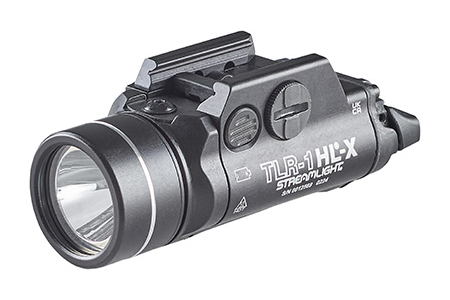Rebecca Spayne, Managing Editor of Fire Buyer caught up with Eric Linnenburger, Battalion Chief of Westminster Fire Department at FDIC to analyse modern challenges and adaptation
How did you end up where you are today?
I’ve been in the fire service for about 26 years. Kind of out of high school, I wasn’t sure what I wanted to do and found the fire service and enrolled in a fire science program at my local college and it all lifted off from there. I worked for a small volunteer fire department in a rural area as an intern while I was in school and just really developed the love for it. A couple of years later, I was hired by my current department, the Westminster Fire Department in Colorado. We are a suburban department just outside of Denver.
We’ve been there for just over 24 years now and I’ve gone through the ranks of firefighter. I was a paramedic firefighter for quite a few years and then transitioned to lieutenant and then captain and currently a battalion chief. The Westminster Fire Department, we’re a six-station department, so fairly small, but we operate in a fairly urban-suburban type environment and work within a big region. We have an automatic aid agreement with all of our local departments in the area, so we operate within a 37 to 40 station region where we send the closest unit, regardless of jurisdiction. So, we feel a lot bigger than we are in our small department. I’ve been there about 24 going on 25 years. We’re a full-service department, so we handle all fire responses, EMS, transport medic units with firefighter paramedics, and special operations like wildland team, technical rescue, hazmat, and water rescue. I live about an hour north of where I work in Fort Collins, where I grew up and live with my wife of 25 years and have two daughters in college now.
What are some of the unique challenges that you face compared to other regions in the states or internationally?
I think a lot of our challenges are probably pretty similar to the challenges across North America, but I think specifically where I’m at, we are a growing region. We have a lot of new construction, a lot of commercial fires, and a lot of lightweight construction, which burns fast and hot. We’re also getting bigger buildings, mid-rise buildings with parking garages underneath, and dealing with increased call volume. Our population in our area hasn’t grown that much, but our call volume has gone up by thousands of calls per year. We run over 17,000 calls a year out of six fire stations, covering all hazards, including EMS. We also face challenges with changes in society and the wildland-urban interface as we’re right at the base of the Rocky Mountains.
How do you balance all those different challenges, especially with budgeting and training across different areas of your department?
It’s overwhelming. Sometimes it feels like we’re just running on a hamster wheel, trying to keep up. In the fire service, especially in the North American Fire Service, we don’t say no to anything. We take on all these different challenges because it’s right for our communities, but we’re often shorthanded. It’s very challenging to keep up with training, budgeting, and staying proficient. We constantly drill into our people that growth and change are inevitable. We struggle with change, but we’re in a progressive region where things change fast, and we have to keep up with it. It involves a lot of planning, reacting to new challenges, and trying to be proactive.
How do you foster a culture of continuous improvement within your battalion?
It’s a mindset thing. We try to remind people that change is inevitable and focus on things that help both the service and our teams. Our environment is getting more complex, so we look for innovations and technologies that can help us deal with this complexity. There will always be a need for the human firefighter, but technology can aid us. It’s about meeting people where they are, demonstrating how and why training or technology will benefit them, and combining data and science with boots-on-the-ground experience. We communicate a lot, showing the why behind things to make our job safer and more efficient.
What strategies do you employ to help manage the inventory effectively in a fire department with continuous budget constraints?
It’s a huge challenge. For years, we didn’t prioritise inventory management, but now we need to be more transparent and responsible to justify getting what we need. We’ve incorporated asset management systems to make it easier to track day-to-day inventory, apparatus checks, and equipment maintenance. This helps us build replacement schedules and show that we’re responsible with our assets. We’ve put more focus on taking care of our assets and proving why we need certain things. We’re using mobile devices for inventory control to make it easier for the end user, and we’re working on taking complexity out of the job to focus on decision-making in the field.
If you had extra budget, how do you decide which technologies to invest in?
We follow industry challenges and look at regional needs. We’re doing more regional purchasing to complement each other, relying on subject matter experts in our department to research and recommend investments. We form teams to look into specific issues like lithium-ion battery fires, and determine the best use of our budget. It’s a combination of having the right people, information, and approach to plan and sell the need for new technologies effectively.
Read the full interview in our last issue here.
Never miss a story… Follow us on:
International Fire Buyer
@Firebuyer
Fire Buyer
Media Contact
Rebecca Spayne Managing Editor, International Fire Buyer
Tel: +44 (0) 1622 823 920
Email: editor@firebuyer.com











